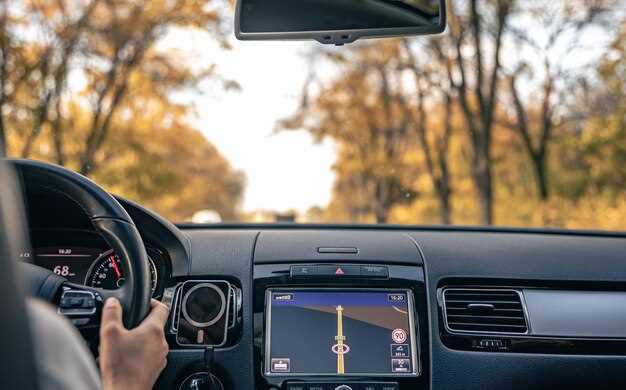
In the world of modern automotive engineering, adaptive cruise control (ACC) has emerged as a revolutionary feature that enhances the driving experience by providing a higher level of control on the road. This system allows Dodge Chargers to automatically adjust their speed to maintain a safe distance from the vehicle ahead. By utilizing advanced sensors and algorithms, ACC represents a significant leap forward in driving assistance technology.
For Dodge Charger owners, understanding how this system works can greatly improve both safety and comfort during long drives. The cruise control feature, when combined with adaptive capabilities, takes the driver’s hands off the throttle while ensuring the vehicle stays within a safe speed range. This not only allows for a more relaxed driving experience but also reduces fatigue during extended road trips.
As we explore the intricacies of adaptive cruise control in Dodge Chargers, we will delve into its functionality, benefits, and potential limitations. With a comprehensive understanding of this technology, drivers can take full advantage of the features available in their vehicles, leading to a smarter, safer, and more enjoyable driving experience.
How Adaptive Cruise Control Works in Dodge Chargers

Adaptive Cruise Control (ACC) in Dodge Chargers enhances the driving experience by automatically adjusting the vehicle’s speed to maintain a safe distance from the vehicle ahead. This tech utilizes various sensors, including radar and cameras, to monitor traffic conditions in real-time.
When the driver activates the cruise control system, the ACC first sets a desired speed. As the vehicle cruises, it continually scans for obstacles or slower-moving vehicles in its lane. If a vehicle is detected ahead, the system automatically reduces the speed of the Charger to ensure a safe following distance.
The driver can set preferred following distances, which the tech incorporates into its calculations. This allows for a tailored driving experience that fits individual comfort levels. Furthermore, once the road ahead is clear, the ACC seamlessly accelerates back to the pre-set speed, providing a smooth transition between speed adjustments.
Additionally, if the vehicle in front comes to a complete stop, the system can bring the Charger to a halt and, when traffic resumes, accelerate again automatically. This feature significantly reduces the need for driver input in stop-and-go traffic situations.
Overall, the adaptive cruise control system in Dodge Chargers combines safety and convenience, making highway driving both easier and more efficient.
Key Features of Adaptive Cruise Control in Dodge Chargers

Dodge Chargers equipped with Adaptive Cruise Control (ACC) exhibit a range of advanced tech features that enhance both safety and convenience during driving. One of the primary components is the radar sensors, strategically placed to monitor the distance between your vehicle and the one ahead. This allows the system to automatically adjust the speed to maintain a safe following distance, enabling a more relaxed driving experience.
Another significant feature is the ability to set your desired speed and subsequently have the system maintain it, even in varying traffic conditions. The ACC can reduce the speed when it detects slower vehicles in the same lane and will smoothly accelerate back to the pre-set speed when the road ahead is clear.
The integration with other onboard technologies further elevates its capabilities. For instance, the ACC functions in harmony with lane-keeping assist systems, providing a comprehensive solution for long-distance drives. Additionally, the tech can manage speeds during stop-and-go traffic, automatically bringing the vehicle to a complete stop and resuming when the flow of traffic resumes.
Lastly, user-friendly interfaces allow for easy adjustments and customization of settings. Drivers can conveniently modify cruising speeds and sensitivity through dashboard controls, ensuring a personalized driving experience tailored to comfort and safety. Overall, the Adaptive Cruise Control in Dodge Chargers reflects an evolution in automotive technology, prioritizing both user convenience and enhanced road safety.
Common Issues and Troubleshooting Adaptive Cruise Control
Adaptive cruise control (ACC) in Dodge Chargers is designed to enhance driving convenience by automatically adjusting the vehicle’s speed to maintain a safe following distance. However, drivers may encounter several common issues that can affect system performance. Below are some of these issues along with troubleshooting tips.
- Inaccurate Distance Detection:
Sometimes, the system may not accurately detect the distance to the vehicle ahead, resulting in unexpected acceleration or deceleration.
- Check for obstructions on the sensors, such as dirt, ice, or debris.
- Ensure the sensors are aligned properly; misalignment can lead to inaccuracies.
- System Disengagement:
ACC may unexpectedly disengage while driving, causing a loss of control.
- Verify that all system indicators on the dashboard are functioning correctly.
- Look for any warning lights that may signal a malfunction in the system.
- Unresponsive Controls:
At times, drivers may find the cruise control buttons unresponsive, making it difficult to set or adjust the speed.
- Test the buttons for proper function; intermittent issues may indicate a wiring problem.
- Try resetting the system by turning off the engine and restarting it.
- Failure to Activate:
ACC may fail to activate altogether, preventing drivers from utilizing this feature.
- Ensure the vehicle is traveling at a speed above the minimum required for ACC to engage.
- Check if there are any active safety features that may disable the system, such as traction control.
If these troubleshooting tips do not resolve the issues, it is advisable to consult a certified mechanic or visit a Dodge dealership for a comprehensive diagnosis. Proper maintenance of the adaptive cruise control system can ensure it remains reliable and effective for a safe driving experience.




